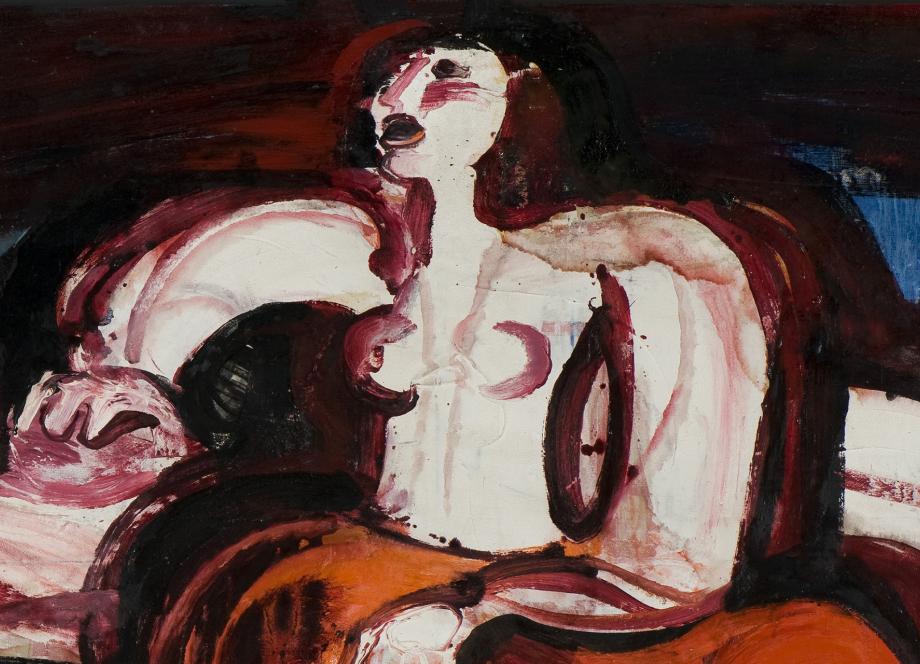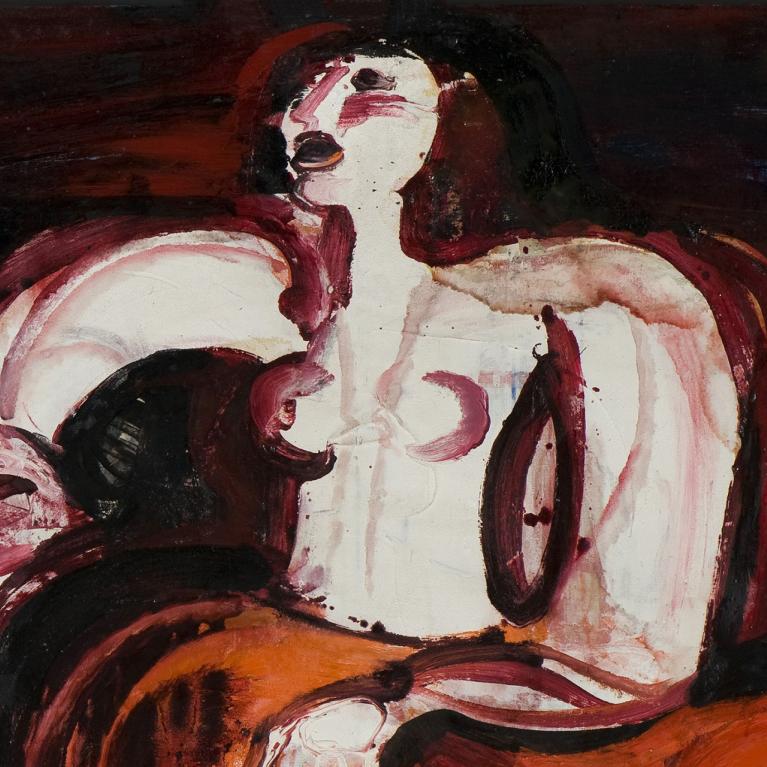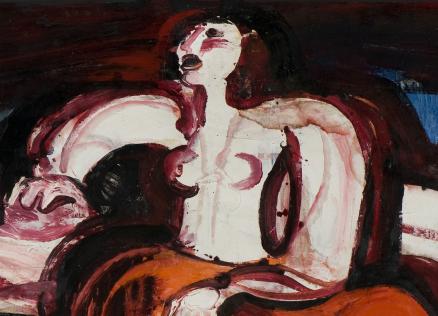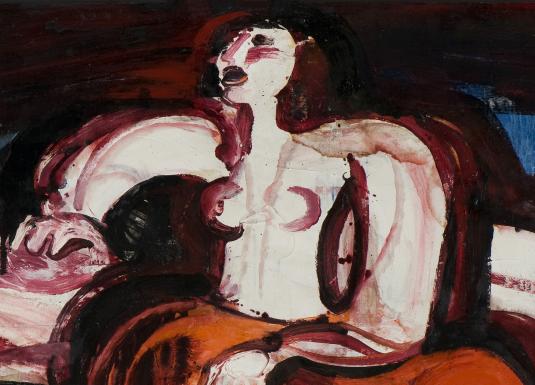Džemma, an exhibition dedicated to the 100th anniversary of the remarkable Latvian painter Džemma Skulme, is taking place in the right wing galleries of the 2nd floor of the main building of the Latvian National Museum of Art in Riga (Jaņa Rozentāla laukums 1) from 23 August 2025 to 25 January 2026.
23 August 2025 – 25 January 2026
Main building of the Latvian National Museum of Art /
right wing (2nd floor)
Jaņa Rozentāla laukums 1, Riga
Media tour of exhibition on 22 August 2025 at 12.00
Registration of participants: 11.30–12.00
The artist Džemma Skulme (1925–2019) both in her painting and personal conviction about the role of culture in a broader context, was always guided by the measure of human basic values – a spiritual vertical rooted in the heritage of folk culture.
The goal of this exhibition is not only to explore the situation of art and society in Soviet-occupied Latvia through the creative contribution of a single author but, more crucially, to highlight the individual will of the artist’s personality to speak about what was essential to both herself and her people despite ideological constraints. Džemma Skulme’s art is a testament to how, under conditions of censorship, she gradually liberated herself from the state-imposed Socialist Realist expression, including ideological pathos, through expressive painting language. The artist’s personality and public stance have undeniably had a significant impact in Latvia both during the Soviet occupation and after the restoration of Latvia’s independence. As the Head of the Artists’ Union of Latvia (1982–1992), she actively participated in the National Awakening movement and, in the turbulence of political times, playing a direct role in the country’s fight for independence.
Džemma Skulme was born into the family of painter Oto Skulme and sculptor Marta Skulme. A fact worth emphasizing because, under the Soviet rule in Latvia, the authorities sought to suppress the art of the (pre-occupation) independent state as ideologically threatening formalism. Meanwhile, Džemma Skulme integrated the legacy of Classical Modernism into her compositions, even within the framework of Socialist Realism. Her free brushstrokes, the energy of colour and the abstract experience of Modernism are interpreted as signs of artistic sovereignty. She used painting as a personal space of exploration and freedom, a means to understand herself and affirm traditions. The author’s triad of figures – the daughter of the nation, caryatid and queen – also personified her desire to protect and honour national heritage. As a recurring theme, she introduced the motif of dialogue, elevating symbols of Latvian identity into an internationally resonant form of art, for example, comparing the dignified folk maiden with the princesses of Spanish painter Diego Velázquez.
The generation of artists in Latvia, including Džemma Skulme, did not intend to theorize about feminist positions in their art. However, it is undeniable that she shaped the female figures in her paintings through the feminine identity. The conceptual message of certain exhibition – through today’s value scale, including the lens of feminism – allows us to re-examine the artist’s legacy. Once an influential public figure, she worked throughout her life with an intensity and creative energy that has usually been associated with male artists and their capacity of power. Džemma Skulme’s oeuvre embodies the thought process of a free spirit, reflecting on the fate of women and nations over time, which nowadays, considering the lessons of Soviet occupation, is perceived as fundamentally necessary for the longevity of Latvia’s statehood and culture.
Džemma Skulme’s exhibition is not only a tribute to the artist on the occasion of her centenary. Mistress’ reflections on her life and art are read today with new relevance: “Yes, that’s it. In life, I had to play my role both in politics and public life, and, of course, this exhibition will not fully show me as I am. On the one hand, I lived and worked in a specific time, my works have sounded out various themes, there was what I call social engagement. It has elevated me in society, so people know me, and that also created a myth about me. Because it was the Soviet era, and it was important: the people had to be encouraged to recognize themselves, their heritage, and their values – that we are a rich nation, that we must not lose what we have achieved, what we have created, that we must not lose our self-respect.” (Santa Raita, interview The Myth about Džemma Skulme. Entertainment. Independent Morning Newspaper. 2008)
Text by Sandra Krastiņa
Highlighting the outstanding contribution of Džemma Skulme to Latvian cultural life and the shaping of national identity, Latvijas Banka [the Bank of Latvia] is issuing a special silver collector coin dedicated to the artist, titled Džemma. The coin’s graphic design was created by artist Juris Petraškevičs, who sought to capture Džemma’s distinctive imprint on Latvian art and culture through a brushstroke characteristic of her painting style. Museum visitors will be able to view the new coin by the entrance to the Džemma exhibition. The collector coin is available for purchase on the website.
The exhibition is accompanied by a diverse public programme covering topics in art, history, philosophy, and more. Through the life and oeuvre of Džemma Skulme, these events explore the complex relationship between creative individuals and power, as well as the role of the woman artist in society during the second half of the 20th century and into the 21st century.
Supporters:
Exhibition curator and artistic concept creator:
Sandra Krastiņa, artist
Exhibition graphic identity:
Mārtiņš Ratniks, artist
Project manager:
Ieva Kalnača
Head of the Project Management Department /
Latvian National Museum of Art
Ph: (+371) 67 716 123, GSM: (+371) 28 325 624
E:



